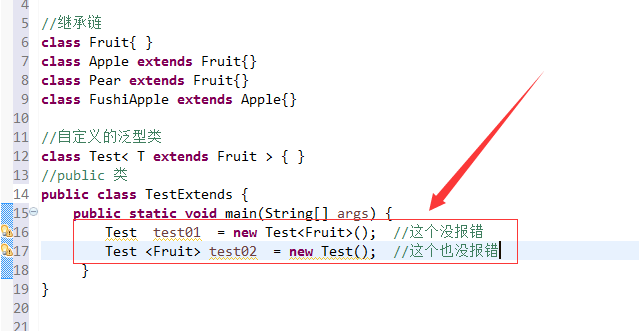被泛型搞懵了!!
 孤独的小鸟 2016-10-21 03:28:37
孤独的小鸟 2016-10-21 03:28:37 //这个是定义的一个泛型类:
class Test< T extends Fruit > {
}
//下面这个是public类
public class TestExtends {
public static void main(String[] args) {
Test test = new Test<Fruit>();
Test<Fruit>test = new Test();
}
}
上面这两个写法有上面区别?
Test test = new Test<Fruit>();
Test<Fruit>test = new Test();
 发帖
发帖 与我相关
与我相关 我的任务
我的任务 分享
分享


